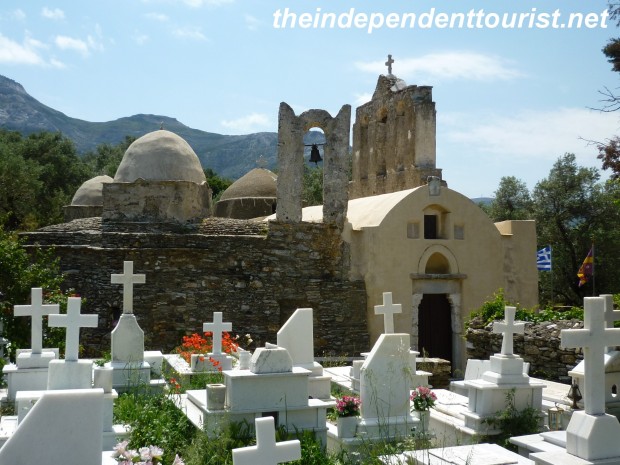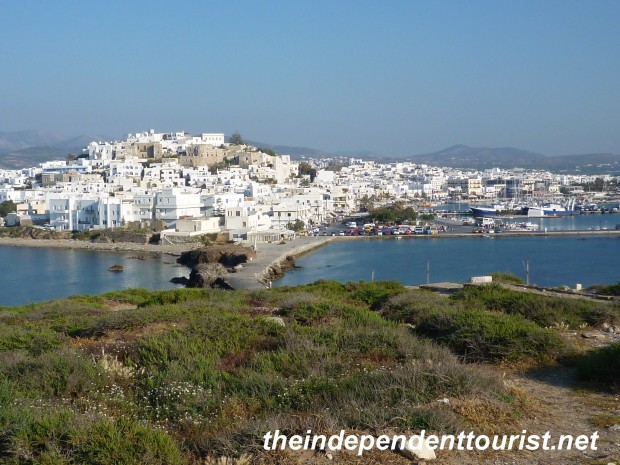
Church of Ayios Georgios Diasoritis, Naxos.
Small historical sights dot Naxos. Some of the best historical features are the little churches which were built during the Byzantine era (the Eastern Greek-Speaking Roman Empire) from the 6th to 15thcentury A.D. Most of these little churches will not be mentioned in U.S. guide books, pick up (usually free) a local guidebook upon arrival from your host (see reference below).

Church of Ayios Nikolas, Naxos, now in a cow pasture!

Another view of Ayios Nikolas Church, Naxos.

Naxos Island Locations.
Some of the churches are a little walk from the main road or parking, a few are right off the main roads between Naxos Town, Chalki, Moni and Apeiranthos. Many contain wall paintings. Some of the churches are open only a few hours a day, so plan your visit accordingly. We just missed getting in the Church of Panagia Damiotissa which closes at noon, but we were able to go into the Church of Panagia Dosiani (on the same road as Panagia Damiotissa and near the town of Moni), which dates to the 7thcentury A.D., and is one of the oldest Christian churches in existence. It is open mornings and afternoons. There are somewhat faint (7th & 8th century) frescoes on the walls and ceilings of the little apse (we could not take pictures inside). I loved seeing these paintings which have survived pretty well for over 1,300 years! A small donation is requested at the door.

The ancient stone work of Panagia Drosiani, Naxos.

The cemetery of the Church of Drosiani, Naxos.

Church of Panagia Damiotissa, Naxos Island.
There are also small Venetian towers (forts) all over the island. The Venetians ruled Naxos from the 13th to the 16thcenturies. The forts could send signals to each other in times of danger. Most are now private residences, but a few can be visited. These buildings form the centers of Naxos town and Aperienthos. It’s fun to just drive around the island and let the little brown historical signs guide your stops along the way.
Reference: Naxos Guidebook, 2009; www.redguidebooks.gr













